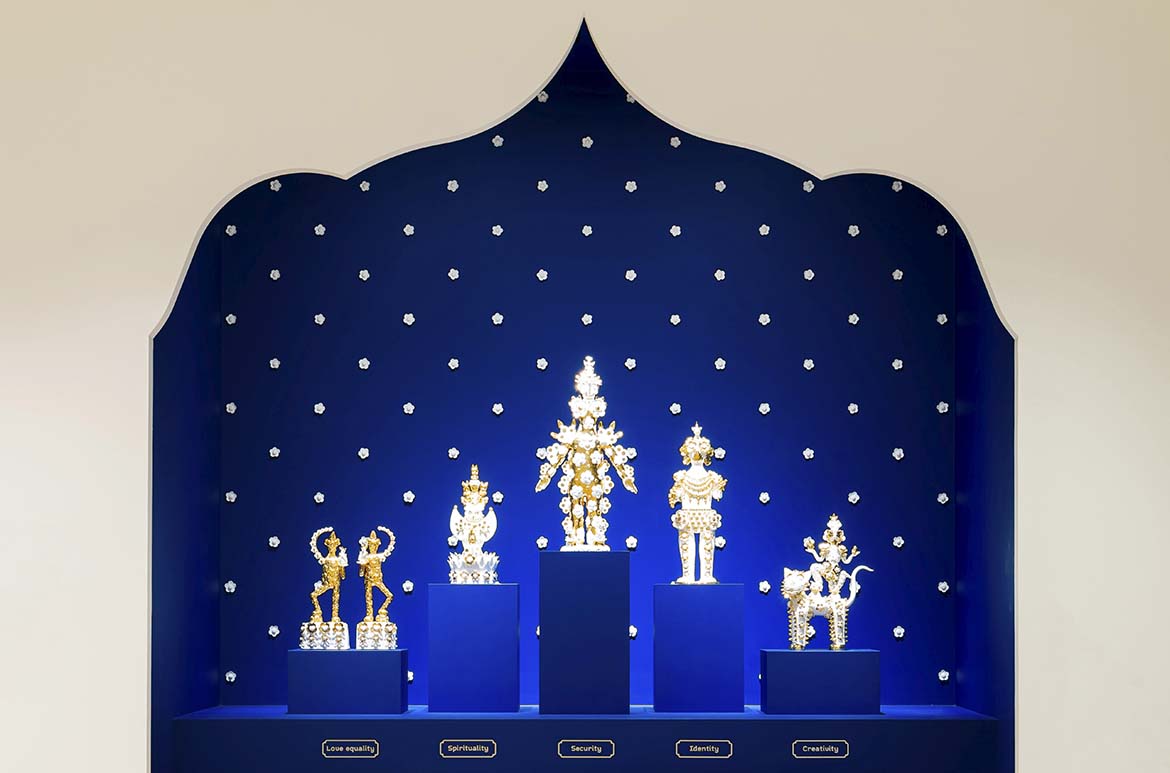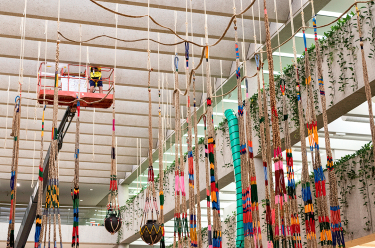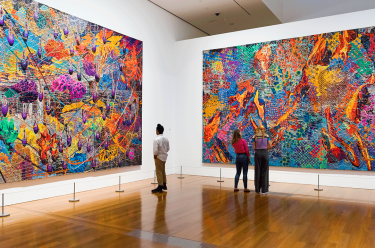Ceramicist Vipoo Srivilasa practises art with a spirit of generosity, optimism and inclusion. Community-minded and attuned to contemporary concerns, including climate change, social justice and the migrant experience, he addresses these issues through artworks that offer hope for our troubled times.
Srivilasa is known primarily for his idiosyncratic and meticulously crafted blue-and-white porcelain sculptures that celebrate his Buddhist faith, the folktales and iconography of his homeland and his life in Australia. He moved from Bangkok to Melbourne in 1997 to study ceramics at Monash University, and completed further study in Tasmania before settling in Melbourne.
Since 2008, Srivilasa has included audience participation in many of his artworks, explaining: ‘I’ve always been interested in creating opportunities for sharing and exploring complex ideas of cross-cultural experience’.1
Watch: Vipoo introduces ‘Shrine of Life/Benjapakee Shrine’
The blue-and-white palette Srivilasa has typically favoured references Lai Krarm, or Thai domestic tableware, and, more broadly, the ceramics that originated in Henan Province, China, in the ninth century, which were traded through the Middle East via the Silk Road and later imported to Europe. The crockery became a ubiquitous and coveted commodity in late-eighteenth-century England during a period of colonial expansionism, when potters such as Josiah Spode appropriated the original Chinese designs and adapted them to suit British tastes. The phenomenon has been interpreted as a form of cultural imperialism by postcolonial theorist Edward Said, whose text Orientalism (1978) dissected Western tendencies to exoticise the East. Srivilasa recognises this history while seeing the importation of blue-and-white ware as analogous to his own journey from East to West, and embracing the cross-cultural exchange it has entailed. ‘Nowadays,’ he says, ‘I find it hard to tell which culture is which in my work … The boundary is a blur.’2
Vipoo Srivilasa ‘Shrine of Life/Benjapakee Shrine’
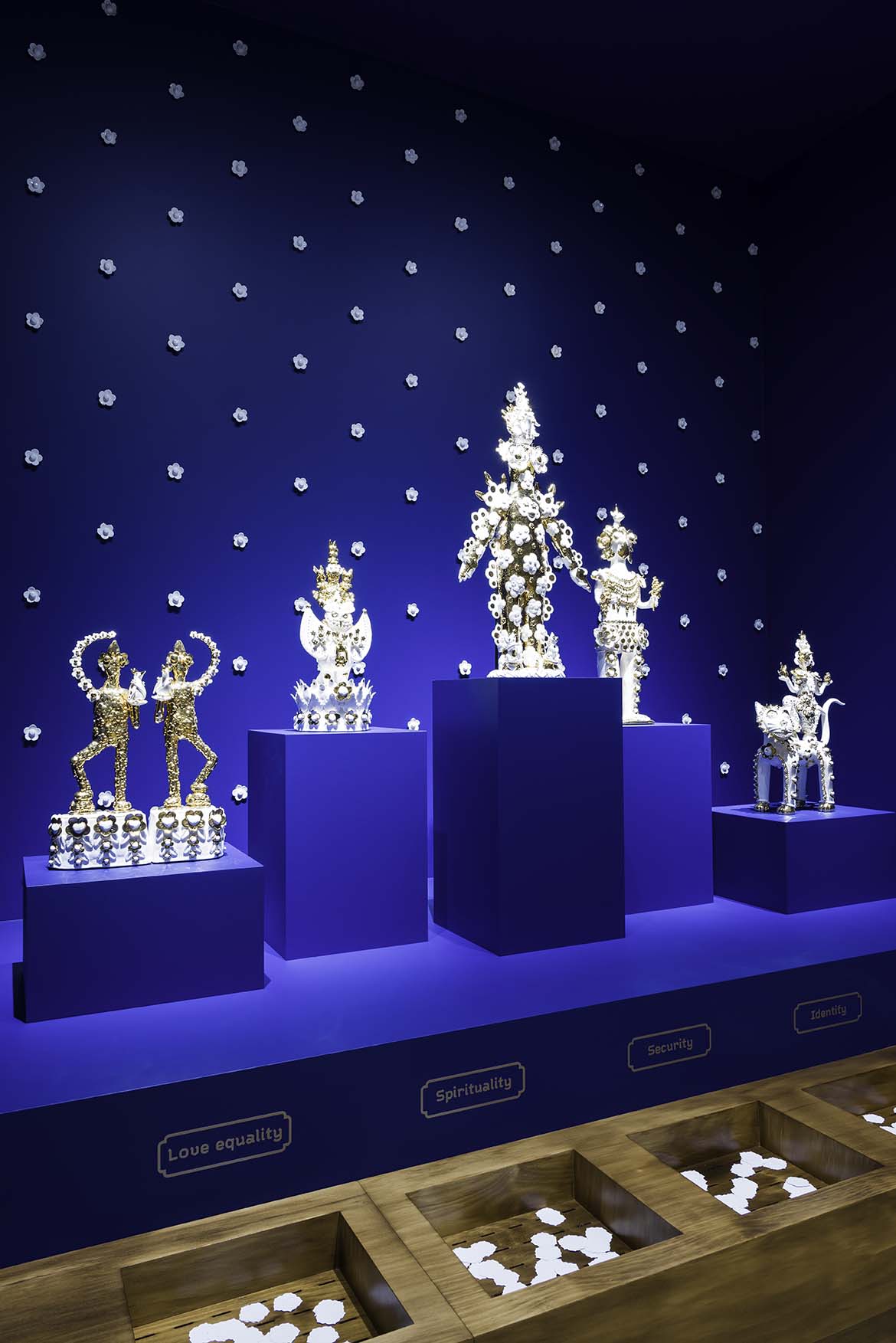
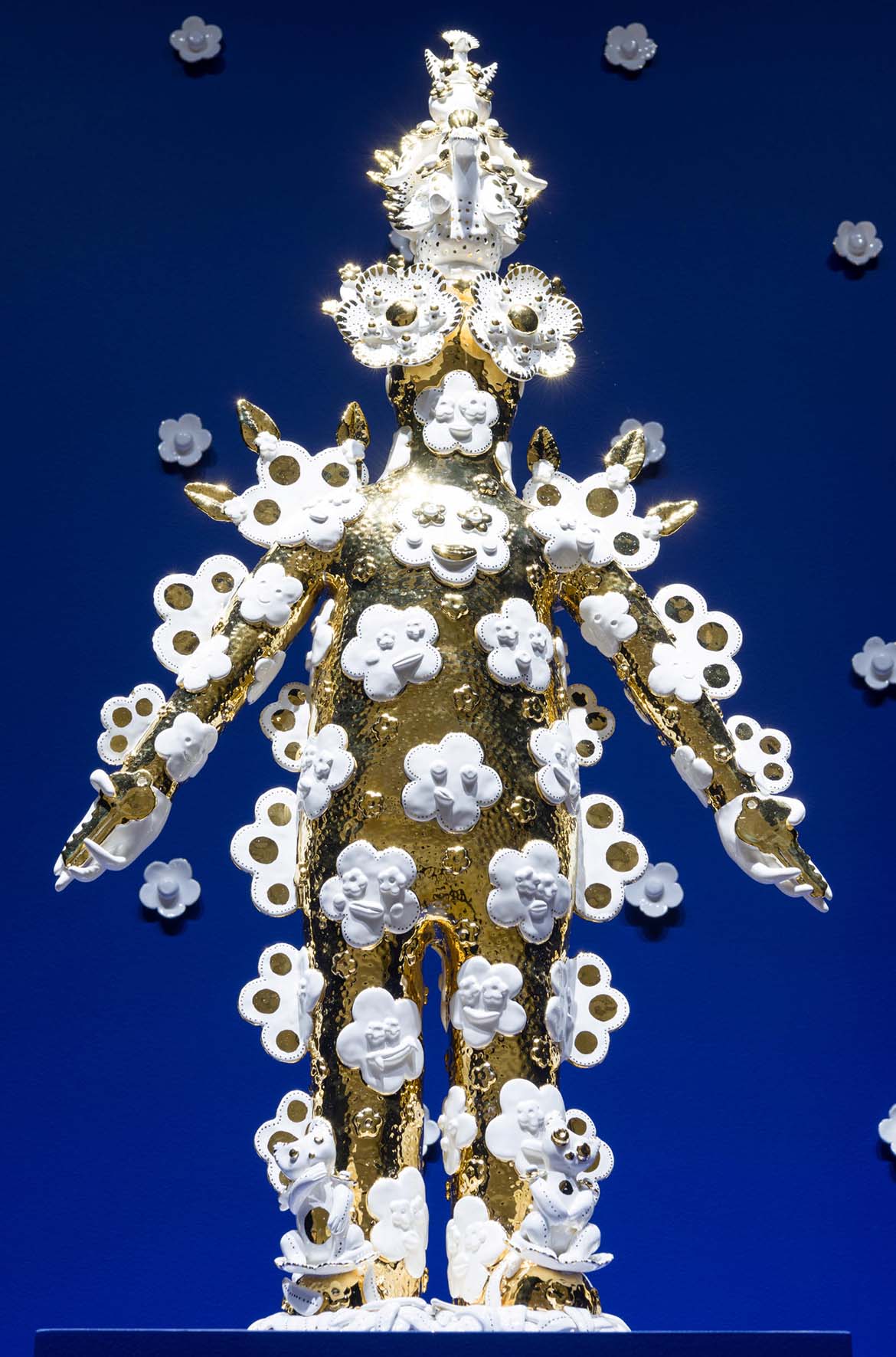
Srivilasa’s Shrine of Life/Benjapakee Shrine 2021 builds on the audience-oriented nature of his previous work and pays homage to his fluid identity. The shrine-like sanctuary houses five contemporary deities Srivilasa has made to represent qualities important to him: love equality, spirituality, security, identity and creativity. Infused with the scent of jasmine — familiar to worshippers at Thai temples where the blooms are offered as phuang malai (garlands) — the structure makes reference to the Lak Mueang shrine in the centre of Bangkok, which is distinguished by its white and gold architecture and is similarly protected by five Thai deities.3 Srivilasa recalls visiting Lak Mueang to pay his respects and ask for blessings before he left Thailand for Australia, and his artwork venerates this memory and acknowledges what the relocation has meant to him. ‘Love equality’, for example, comments on same-sex marriage that was legalised in Australia in 2017, allowing Srivilasa and his partner to wed, but has yet to be endorsed in Thailand. The king penguins included allude to celebrated gay penguin couple Skipper and Ping in Zoo Berlin, while the arms of the figures that are yet to meet signify an incomplete heart, and Thailand’s ongoing journey towards marriage equality.4
Bridging the sacred and the secular, Srivilasa’s shrine is both a personal expression of devotion and an invitation to visitors to request blessings and protection from one of the deities by making an offering of a paper flower to them. By providing a space in which to reflect and express gratitude, Vipoo Srivilasa shares something of his holistic approach to life and asks audiences to join him in honouring our differences and our commonalities.
Samantha Littley is Curator, Australian Art, QAGOMA
This is an extract from the QAGOMA publication The 10th Asia Pacific Triennial of Contemporary Art available in-store and online from the QAGOMA Store.
Endnotes
1 Vipoo Srivilasa, quoted in Owen Leong, ‘Peril interview – Vipoo Srivilasa’, Peril: Asian-Australian Arts and Culture, 23 September 2011, <https://peril.com.au/back-editions/edition11/peril-interview-vipoosrivilasa/>, accessed 18 March 2021.
2 Vipoo Srivilasa, quoted in Alice Pung, ‘The colonisation of the cute – exploring the work of Vipoo Srivilasa’, Garland Magazine no. 6, 10 March 2017, accessed 13 April 2021.
3 The number five is significant in Buddhist culture: Benjapakee are the sets of five grand Buddhist amulets that are most revered — benja, meaning five; and pakee, meaning associates. The word refers to the five followers the Buddha gathered around him at the deer park at Isipatana where he delivered his first teachings, or Dharma.
4 In July 2020, the cabinet of Thailand approved a draft civil partnership bill that, if ratified by Parliament, will permit same-sex couples to register their union, adopt children, claim inheritance rights and jointly manage assets. See Vitit Muntarbhorn, ‘Thailand’s same-sex civil partnership law – a rainbow trailblazer?’, East Asia Forum, 2 September 2020, <https://www.eastasiaforum.org/2020/09/02/thailands-same-sex-civil-partnership-law-arainbow-trailblazer/>, accessed 27 April 2021.
‘The 10th Asia Pacific Triennial of Contemporary Art’ (APT10) / Queensland Art Gallery | Gallery of Modern Art (QAGOMA), Brisbane / 4 December 2021 to 26 April 2022.
#APT10QAGOMA #QAGOMA
